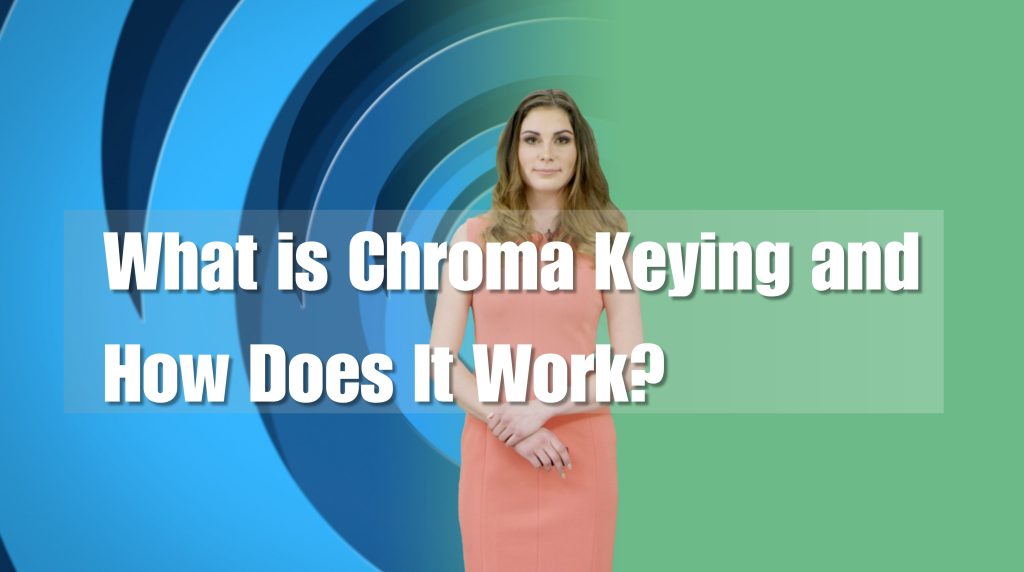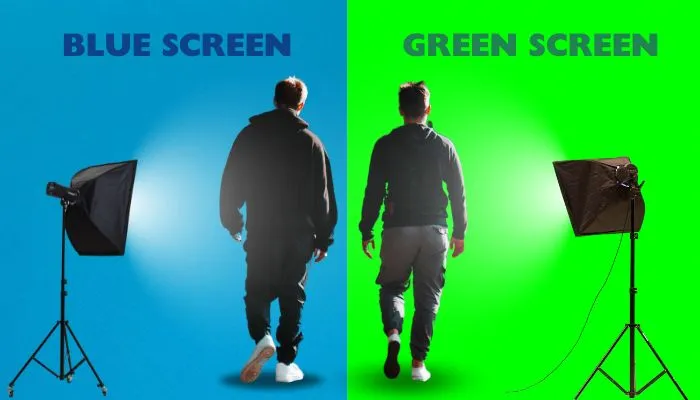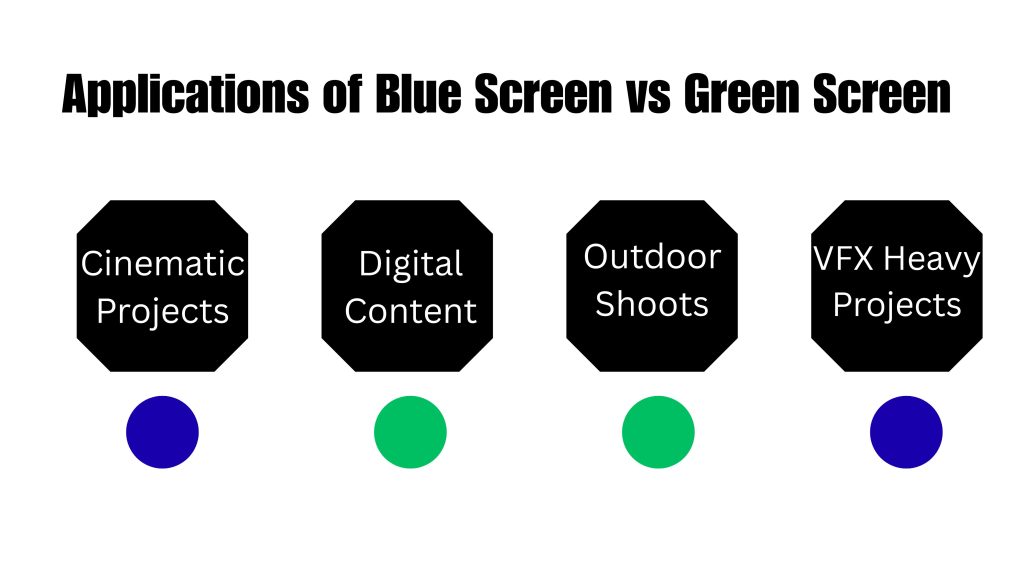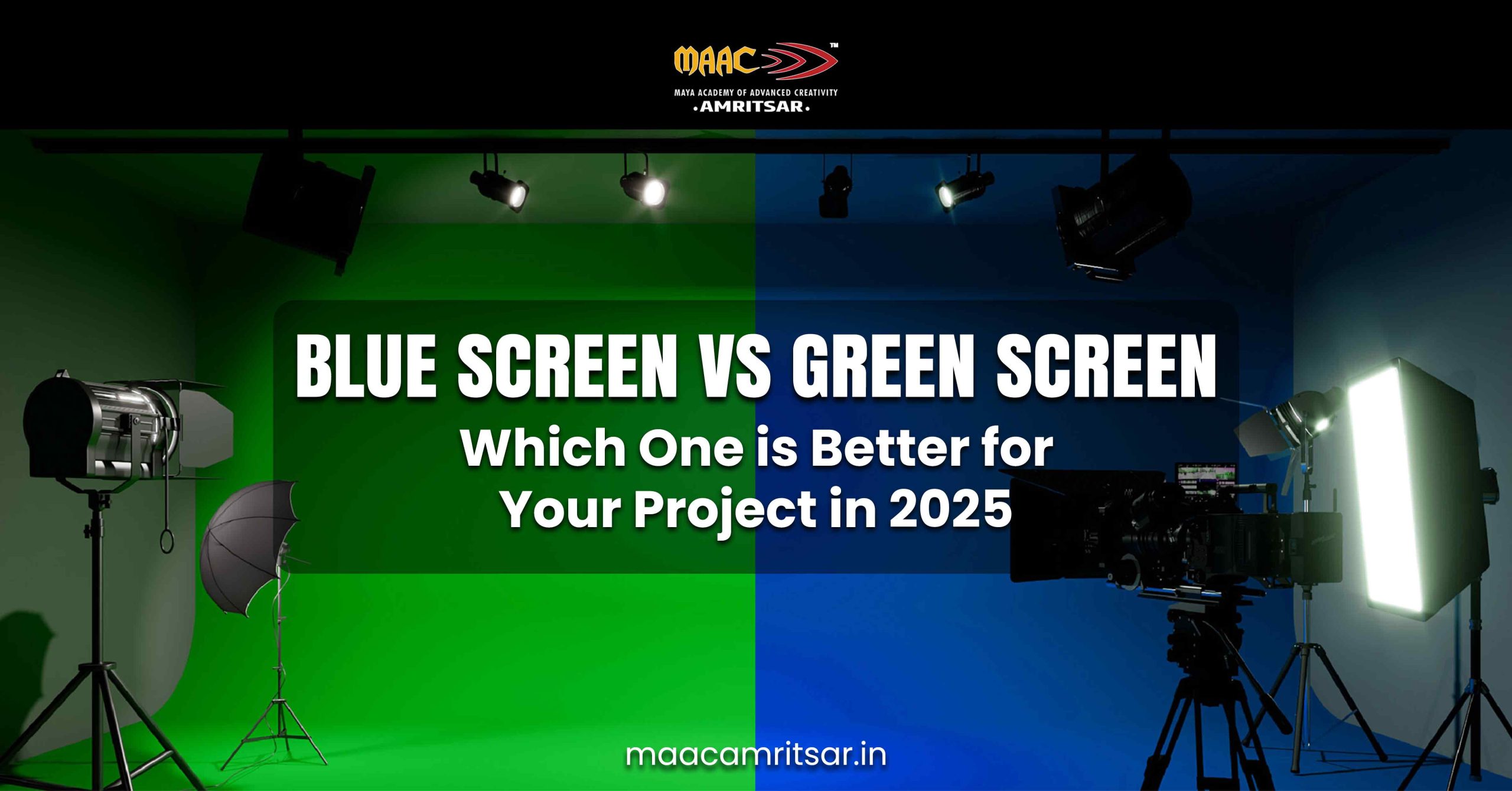In our previous blog, we discussed green screen. Today we talked about blue screen and difference between blue screen and green screen.
When you visit any professional studio, you might see blue or green backdrop stretched across the walls. These coloured screens are not decor items, its backbone of modern chroma keying technique. Green and blue screens are used in VFX to replace a colored background with digital environments or special effects.
One question still puzzles creators at every level: Should you invest in blue screen or stick with the popular green screen? This blog guides you on blue screen vs green screen and which one is best for your project in 2025. By the end of this blog, you will know exactly which screen suits your needs best.
Understanding Blue Screen and Green Screen Technology

What is Chroma Keying and How Does It Work?
Before we start guidance on green screen and blue screen, first you need to clear basics. Chroma keying is a process of removing solid background from video so that another image, animation, and environment can be placed behind the subject. The most common use of chroma keying is in visual effects production to create impossible scenes such as explosions and action sequences.
In professional video editing, chroma keying allows editors to composite multiple layers of footage seamlessly. This technique is not only used in films but also in news broadcasting, gaming videos, virtual production, and live streaming. Both green screen and blue screen are used in VFX to replace background with computer generated imagery.
Blue Screen vs Green Screen: What’s the Real Difference?
Now the main point is if both screens are used for same purpose then what’s the main difference between them? But understanding the difference between green screen and blue screen is essential.
Green Screen Technology
The Green screen is popular choice among VFX artists and creators. Green screen is much brighter than blue screen which makes it easy for digital cameras to capture scene perfectly.
- The process of removing background becomes easy with the help of green screen.
- It gives higher quality results because of its brightness.
- It also requires less lighting as compared to blue screen so it is budget friendly.
Blue Screen Technology
Before green screen technology, blue screen was used by VFX artists to remove solid background with CGI scenes. For night shoots blue screen gives better results.
- For getting better edge details, blue screen gives better results.
- If you work with green costumes, then you require blue scenes.

Difference Between Blue Screen and Green Screen (Blue screen vs Green screen)
| Aspects | Green Screen | Blue Screen |
| 1. Color Brightness | Green screen makes it easier for camera detection because it has high color brightness and is reflective. | As compared to green screen, blue screen has less colour brightness. |
| 2. Lighting Needs | Requires more brightness and lighting to remove the shadow. | Best for capturing scenes at night because it requires less light. |
| 3. Camera Compatibility | With green screen modern digital cameras give sharp and clear results. | Difficult to get same level of results as green screen with use of blue screen. |
| 4. Spill Risk | Green screen has high risk of color reflection onto to subject. | Due to dark color, blue screen has no risk of color spill onto to subject. |
| 5. Edge Detail | Sometimes minor details blend with green screen color like hair and any transparent material. | With low risk of color spill, blue screen captures fine details better. |
| 6. Scene Type | Best for daytime shoots to capture fine details. | Blue screen is mostly used in nighttime shoots to get better results. |
| 7. Post Production Ease | Post production process is easier and faster with use of green screen. | Due to its dark tone it makes post production process more difficult. |
| 8. Applications | Green screen is used in digital content creation and general VFX production. | Blue screen is used in dark scenes, high budget films, and when green object is present. |
| 9. Cost | This is less costly than blue screen because it does not require too many lights. | Requires high budget to add more lighting to get better results. |
Applications of Blue Screen vs Green Screen

While both serve same purpose, they are still used in different cases. Lets discuss few scenarios:
For Cinematic Projects
For high quality cinematic shoots, artists always prefer blue screen. They produce more natural skin tones and handle low light setups beautifully. For example, if you are filming night shoot, blue gives more balanced result during compositing.
For Digital and YouTube Content
If you are digital content creator shooting tutorials, unboxing videos, and interviews then green screen is best option. It is easier to light, cheaper to set up, and faster to process during editing. Most editing software today comes optimized for green screen keying.
For Outdoor Shoots
Green screens work better outdoors as they complement natural light. Blue screens may appear dull or washed out under daylight.
For VFX Heavy Projects
When you need high quality compositing with detailed accuracy like in visual effects production then blue screens deliver cleaner results with less color contamination.
Also Read: VFX vs Animation: Complete Guide on the Difference Between VFX and Animation
Which One Is Better for Your Project in 2025? (Final Verdict)
After debating on blue screen vs green screen, when its time to choose which one is better for your project it all depends on your needs. The advancements in digital cameras, video editing tools, and post production processes have made both technologies more powerful than ever.
Choose Based on Project Type–
| Project Type | Recommended Screen | Reason |
| Film Making | Blue Screen | Good for detailed keying, dark tones, and realistic results. |
| Digital Content Creation | Green Screen | Easier to light and edit with digital cameras. |
| Live Streaming | Green Screen | Quicker setup and faster post production. |
| VFX | Blue Screen | Better accuracy for fine details. |
The best screen for your video depends on your setup, budget, and requirements. Green screens are easier to light and faster to work with. Blue screens give cleaner edges and are great for detailed and cinematic shots. Right choice will make your workflow smoother and your results stronger.
FAQ’s
Ans. Chroma keying is video editing technique that helps you remove solid colored background with computer generated imagery
Ans. Yes you can. Just make sure you use each screen in separate shots to avoid confusion during editing.
Ans. Absolutely. Many mobile apps like CapCut and iMovie support basic chroma key editing.
Ans. Color spill happens when screen color reflects onto your subject. To avoid it, use good lighting and keep some distance between your subject and the screen.


Leave a Reply